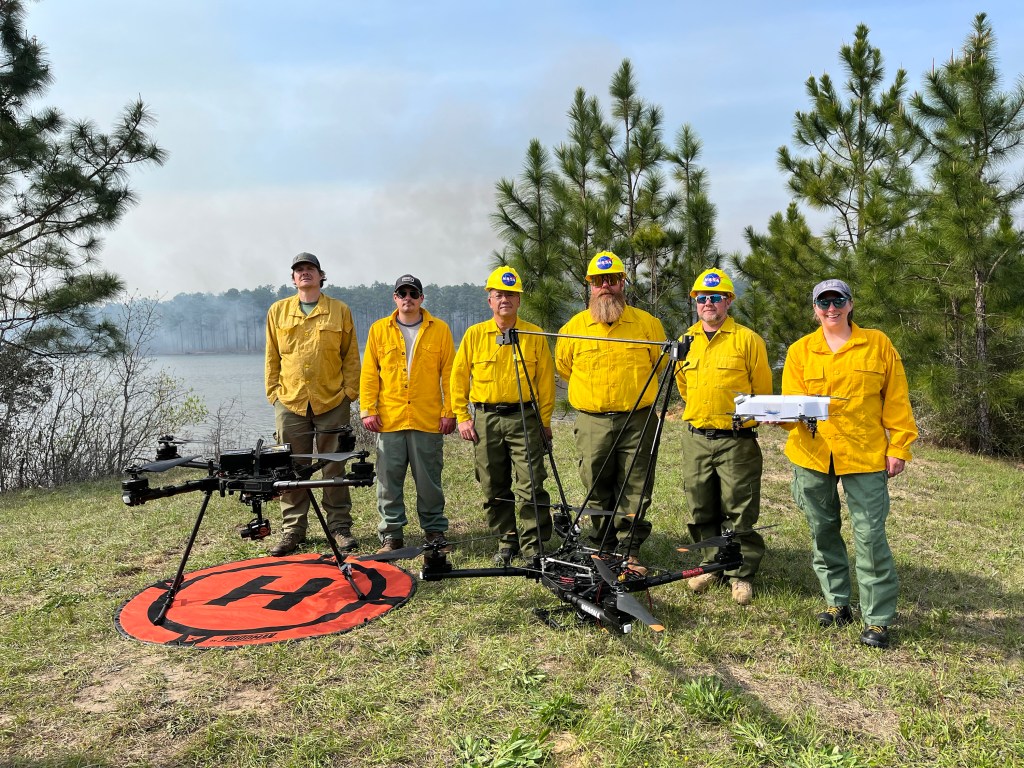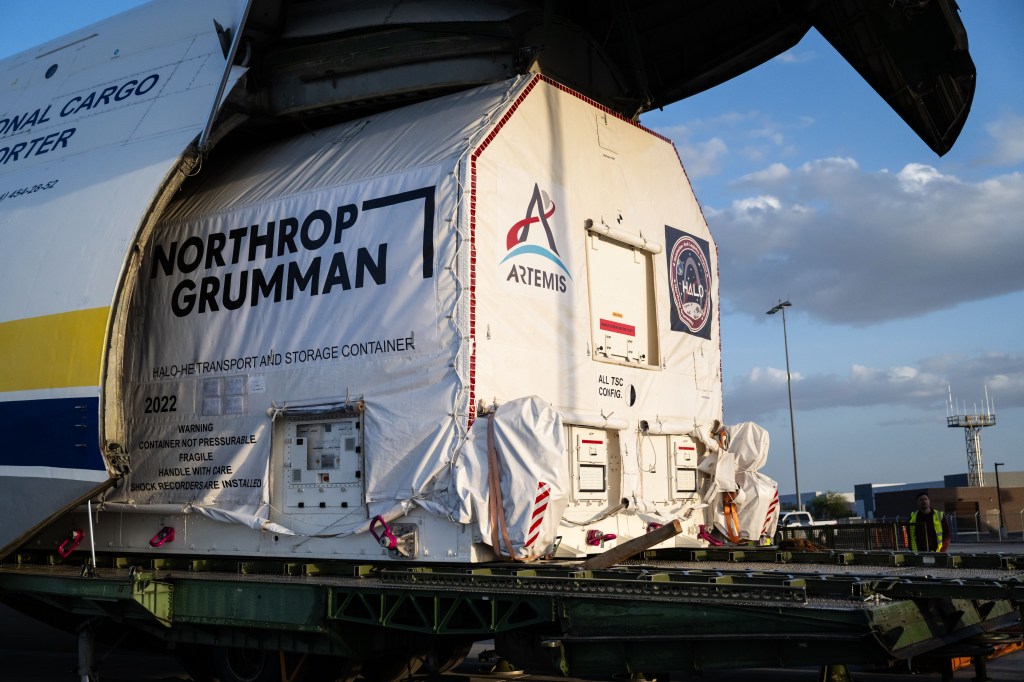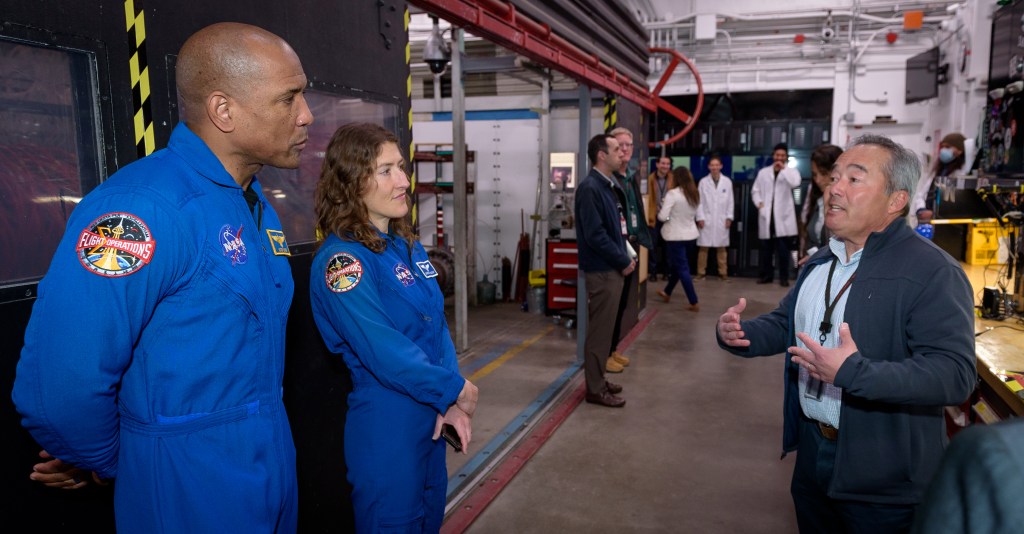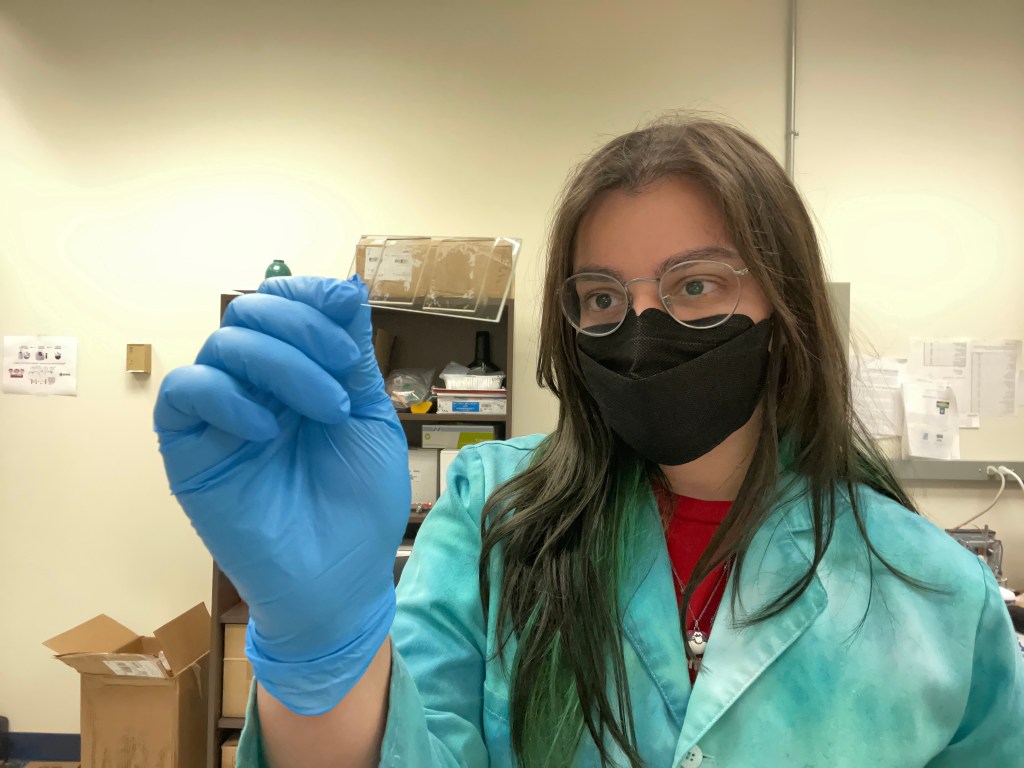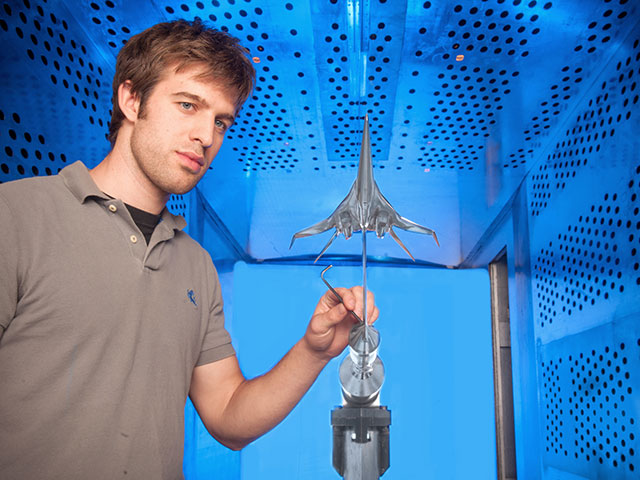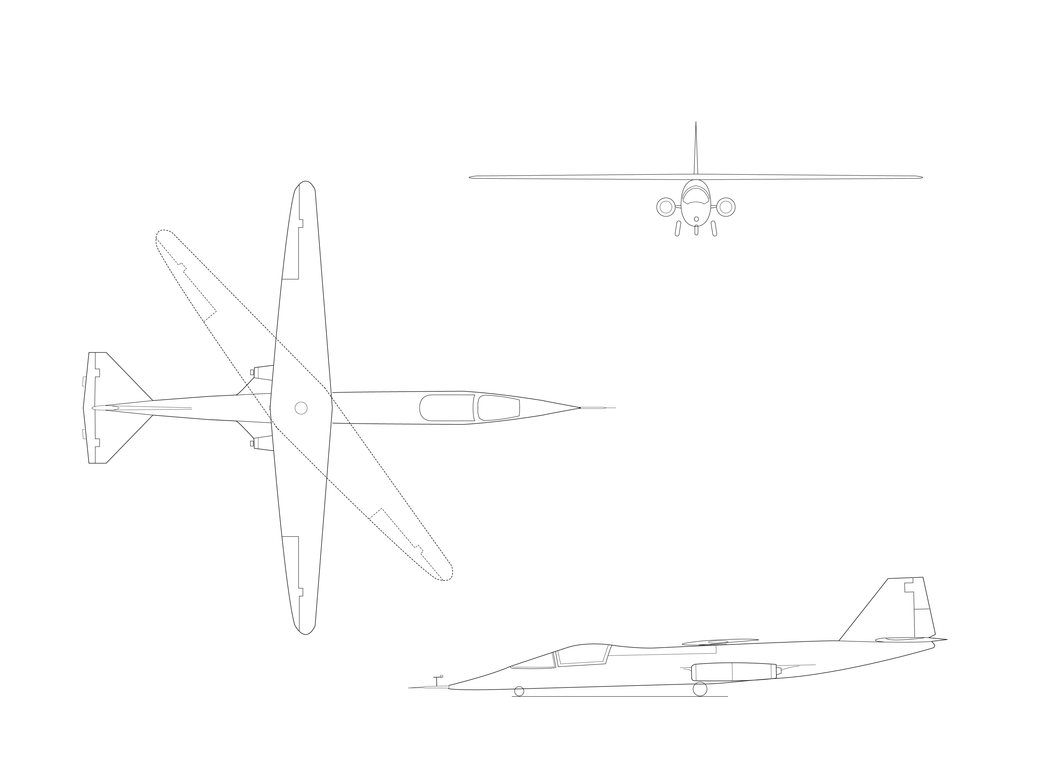EG-0002-01
The Ames-Dryden-1 (AD-1) aircraft was designed to investigate the concept of an oblique (pivoting) wing. The wing could be rotated on its center pivot, so that it could be set at its most efficient angle for the speed at which the aircraft was flying.
NASA Ames Research Center Aeronautical Engineer Robert T. Jones conceived the idea of an oblique wing. His wind tunnel studies at Ames (Moffett Field, CA) indicated that an oblique wing design on a supersonic transport might achieve twice the fuel economy of an aircraft with conventional wings. The oblique wing on the AD-1 pivoted about the fuselage, remaining perpendicular to it during slow flight and rotating to angles of up to 60 degrees as aircraft speed increased. Analytical and wind tunnel studies that Jones conducted at Ames indicated that a transport-sized oblique-wing aircraft flying at speeds of up to Mach 1.4 (1.4 times the speed of sound) would have substantially better aerodynamic performance than aircraft with conventional wings.
The AD-1 structure allowed the project to complete all of its technical objectives. The type of low-speed, low-cost vehicle – as expected – exhibited aeroelastic and pitch-roll-coupling effects that contributed to poor handling at sweep angles above 45 degrees. The fiberglass structure limited the wing stiffness that would have improved the handling qualities. Thus, after completion of the AD-1 project, there was still a need for a transonic oblique-wing research aircraft to assess the effects of compressibility, evaluate a more representative structure, and analyze flight performance at transonic speeds (those on either side of the speed of sound).
The aircraft was delivered to the Dryden Flight Research Center, Edwards, CA, in March 1979 and its first flight was on December 21, 1979. Piloting the aircraft on that flight, as well as on its last flight on August 7, 1982, was NASA Research Pilot Thomas C. McMurtry. The AD-1 flew a total of 79 times during the research program. The aircraft was constructed by the Ames Industrial Co., Bohemia, NY, under a $240, 000 fixed-price contract. NASA specified the design based on a geometric configuration provided by the Boeing company. The Rutan Aircraft Factory, Mojave, CA, provided the detailed design and loads analysis for the vehicle.
The aircraft was 38.8 feet long and 6.75 feet high with a wing span of 32.3 feet, unswept. It was constructed of plastic reinforced with fiberglass and weighed 1,450 pounds,empty. The vehicle was powered by two small turbojet engines, each producing 220 pounds of thrust at sea level. Due to safety concerns, the aircraft was limited to speeds of 170 mph.


